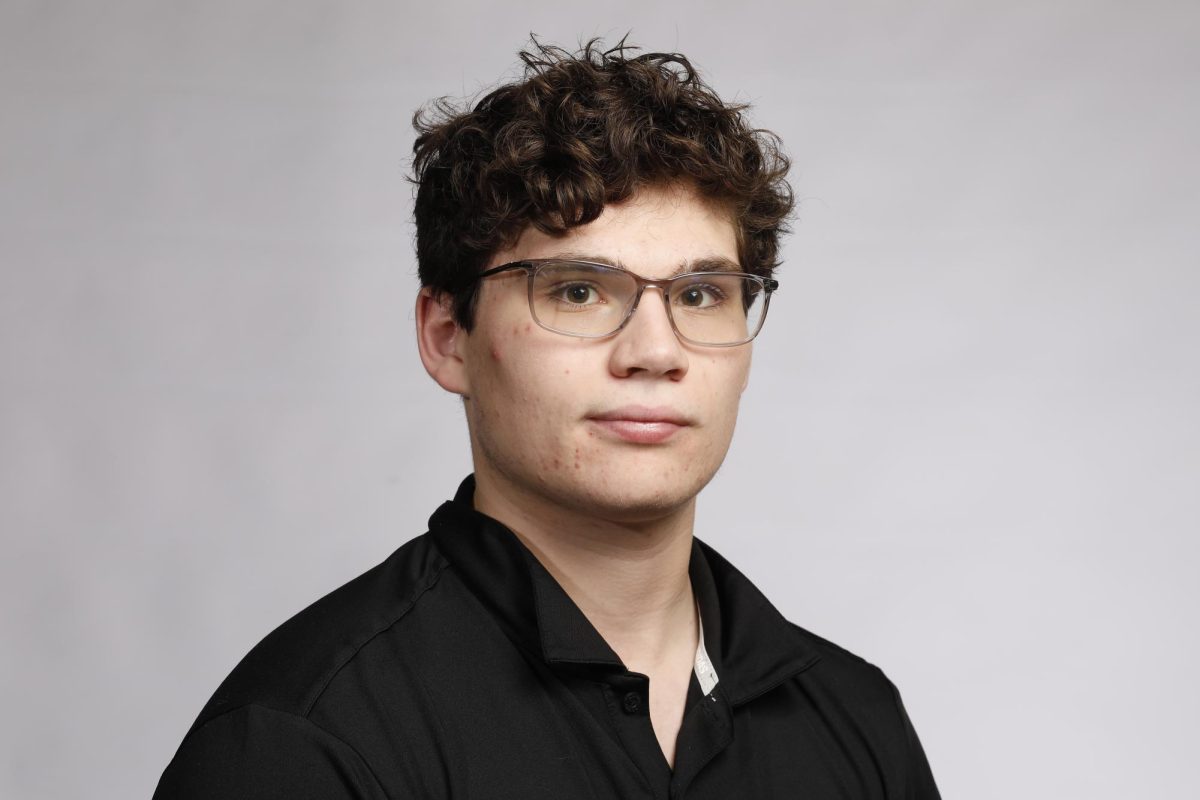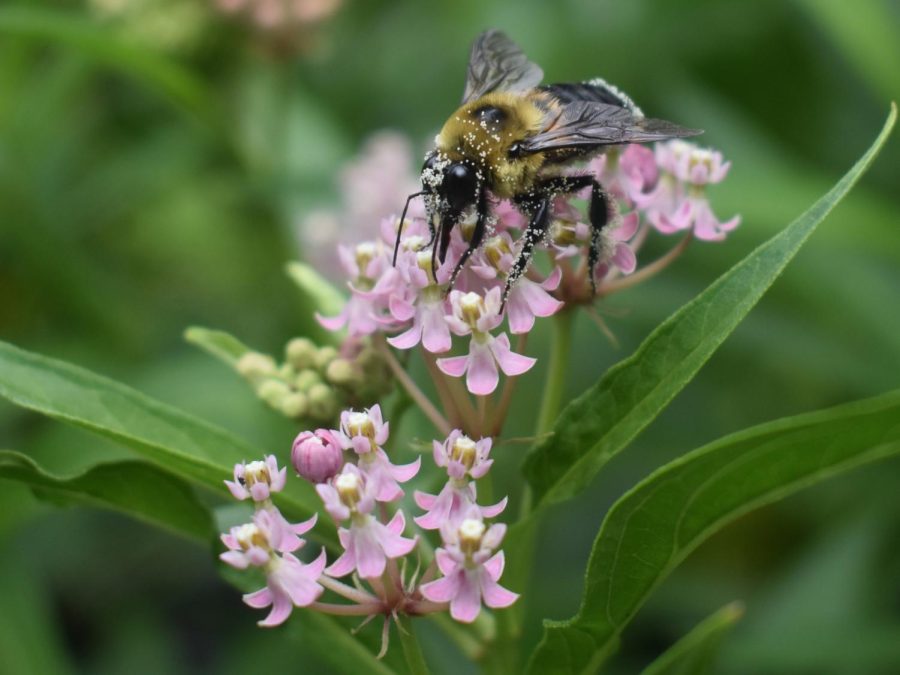Pollinator Project brings awareness to pollinators
Submitted Photo: A bee pollinates swamp milkweed.
April 5, 2023
The butterfly capitol of the state, Charleston, Ill., originated another project to bring awareness to the importance of pollinators locally and beyond.
The Pollinator Project, instated by Charlotte and Richard England under the umbrella of the Coles County Arts Council, intended to take photographs of pollinators in their natural habitat and create various forms of art collages to be displayed at the Link Art Gallery in Paris, Ill.
Though the project is in part an artwork, it also stands as a point of advocacy for pollinators, Charlotte said.
“My hope is that we will be able to demonstrate both the service that these creatures do for us and their intrinsic interest because some of them are pretty fascinating to look at,” Charlotte said.
In addition to bringing awareness to pollinators, Richard said the Pollinator Project is a way to reach out to the community.
“This is more a matter of people who aren’t necessarily artists getting out there and getting involved in creative projects and getting to be a part of that,” Richard said.
Charlotte said this project was in part inspired by Paul Switzer’s butterfly habitats around Charleston that are a part of his nonprofit the Urban Butterfly Initiative.
The Urban Butterfly Initiative began in 2018 and, though Charleston is the epicenter of their work, the initiative now expands out to places like Neoga, Ashmore, Champaign and Normal.
Paul Switzer, a biologist and professor of biology at Eastern, said insects are facing a catastrophic biodiversity loss, and being that they are at the bottom of the food web, this issue is starting to cascade through the rest of the food chain, meaning our food sources will and are beginning to dwindle.
Pollinators can be insects or animals that come in many forms, such as flies, birds, bats, butterflies, bees, and more, but bees in particular pollinate every one of three bites of food we eat, according to the Bee Conservatory.
Switzer said we need pollinators as there are many flowering plants that require the insects to pollinate them and ultimately help them reproduce.
Without pollinators, Switzer said we don’t have the food that we need that comes from pollinated plants.
“From a very kind of fundamental, you know, aspect, a lot of what we eat requires pollinators, and a lot of those things you can’t just replace with honeybees,” Switzer said.
Honeybees are considered livestock and help the economy and the agricultural industry more than the environment, according to Switzer, but Switzer said the better pollinators are the native bee species.
There are 2,000 different species of native bees in the U.S and more than 20,000 species globally, according to the Bee Conservatory, and they are all facing the three main issues of habitat loss, pesticides, and climate change, as well as other smaller issues like parasites, diseases, and non-native/invasive species, according to the National Park Service.
For about 15 years, John and Lisa Killough have been beekeepers and produce their own honey and beeswax products with their company The Vintage Bee, working with 40-50 beehives containing 100,000-200,000 honeybees per hive.
John said the most common misconception of bees is that they want to sting people, but in actuality, they only sting if they are aggravated.
“They’re almost never angry,” John said. “They’re usually pretty docile.”
Although bees are normally calm, some may choose to chemically remove or kill them when they have taken over a space on a property. However, in these situations, the Killoughs advise people to call their local beekeeper to safely remove them from the property.
“Please don’t kill a swarm,” Lisa said. “Even if they’re not honeybees, don’t kill them.”
Education is the first step to understanding pollinators and their importance, and Switzer said one way to do that is to be kind to and care for nature.
“We should be good stewards to the Earth,” Switzer said. “We shouldn’t just trash it. We don’t have another place to go.”
Switzer said the best way to help pollinators specifically is to plant native flowering plants or trees, such as purple coneflower, various asters, butterfly milkweed, blue mist flower, red bud trees, dogwood trees or oak trees.
It is important that the plants be native plant species, as those are the plants that pollinators have evolved with and provide the resources that pollinators need, said Switzer.
Loss of pollinators is not just a local or national issue, it’s a global issue, said Switzer, and developed areas are especially running into problems with loss.
Both people and pollinators benefit from planting native plant species and creating pollinator gardens, said Switzer.
“Even if people don’t like insects, hopefully they can recognize the value of them in our ecosystem and the value of earth,” Switzer said. For more information on or to join the Pollinator Project, go to their Facebook page. For more information on or to join the Urban Butterfly Initiative, go to their Facebook page, Instagram, or email them at ubutterflyinitiative@gmail.com.
Heather Vosburgh can be reached at 581-2812 or at hmvosburgh@eiu.edu.





































































